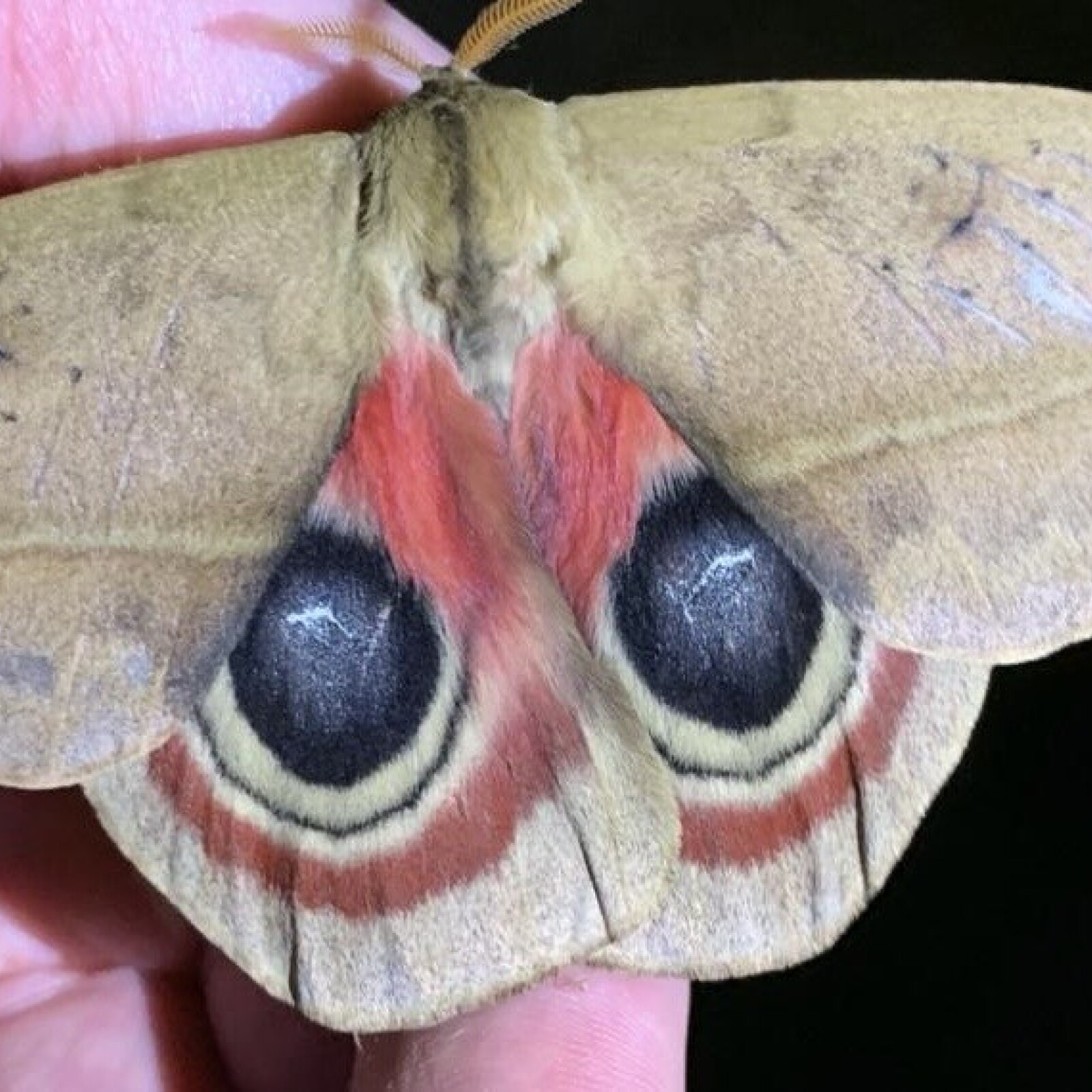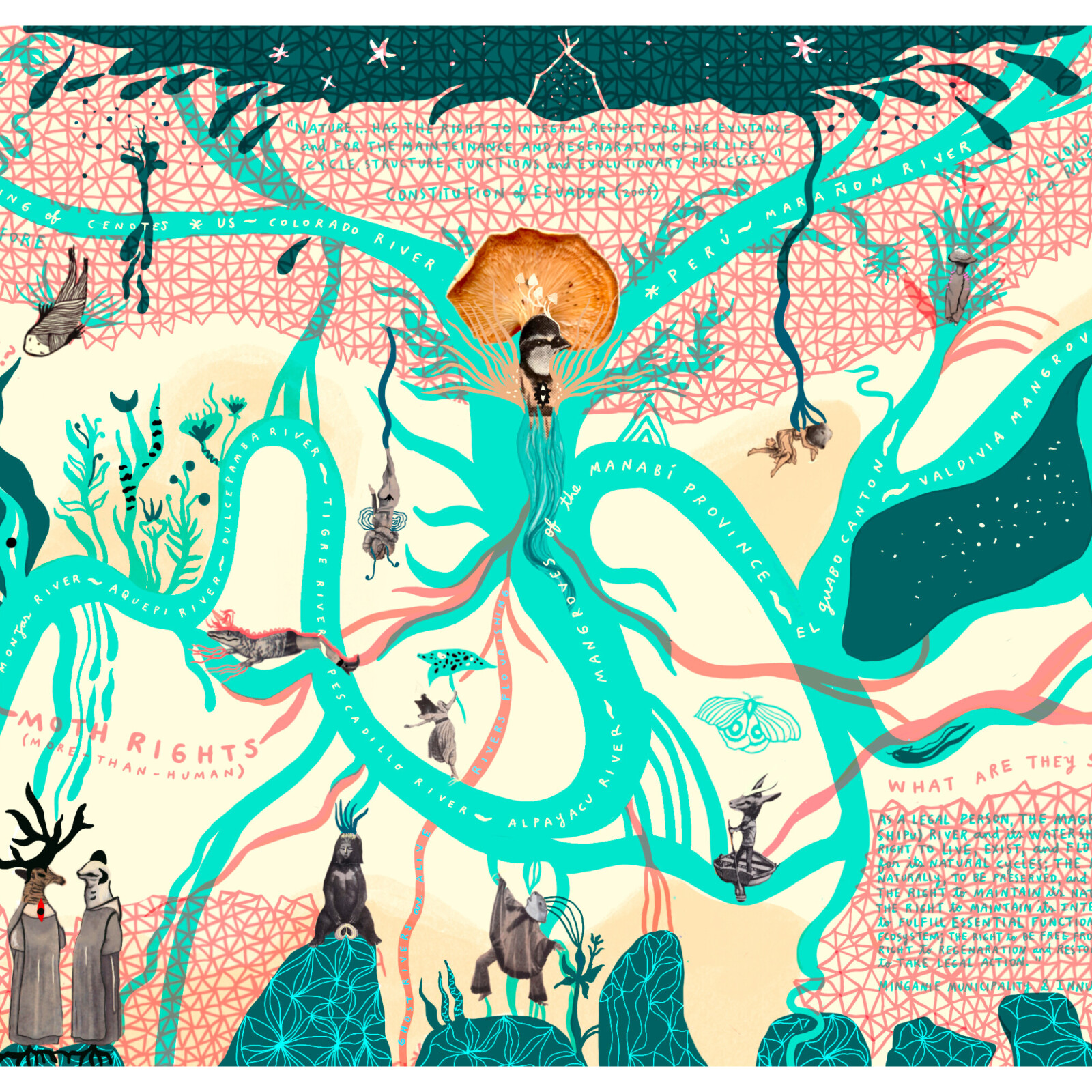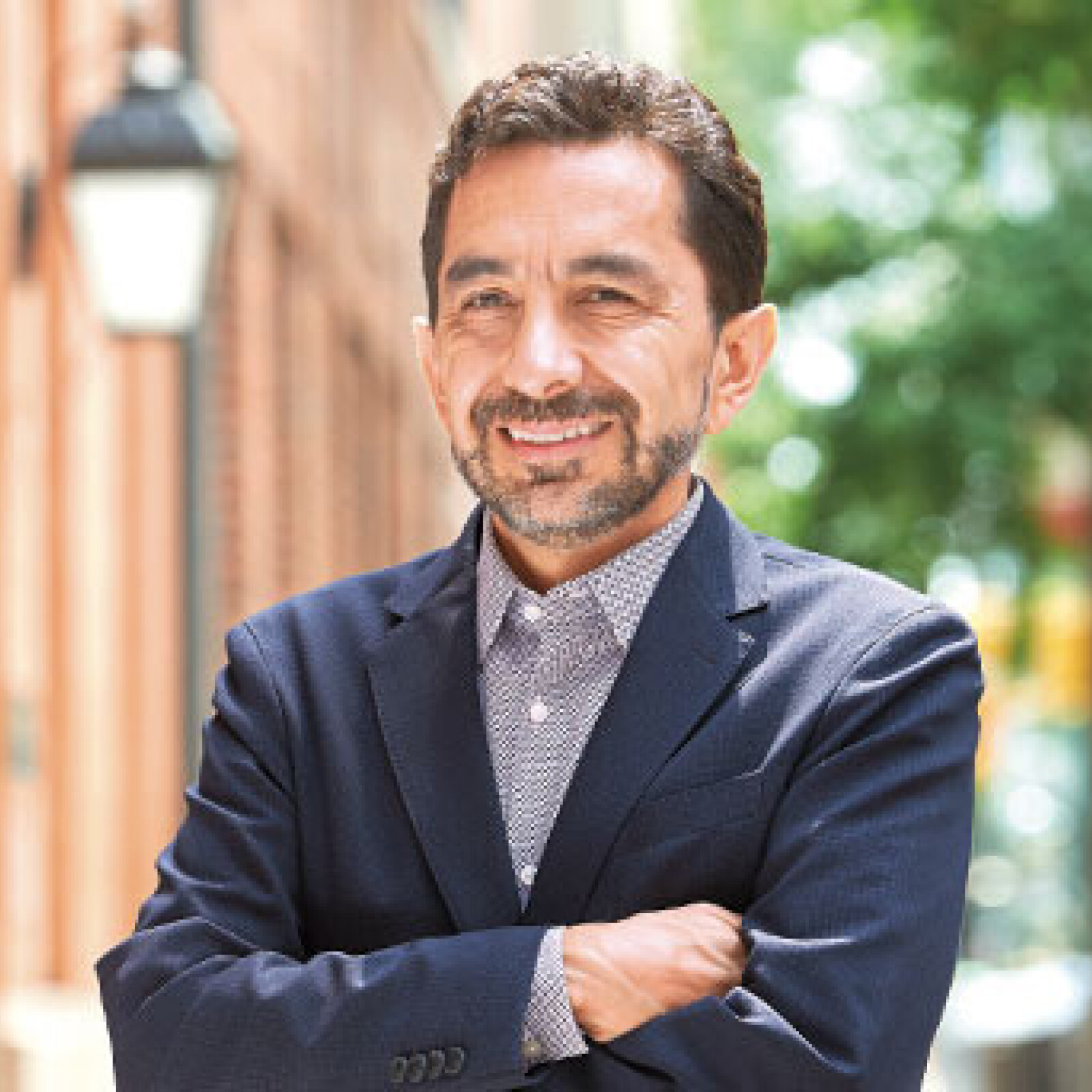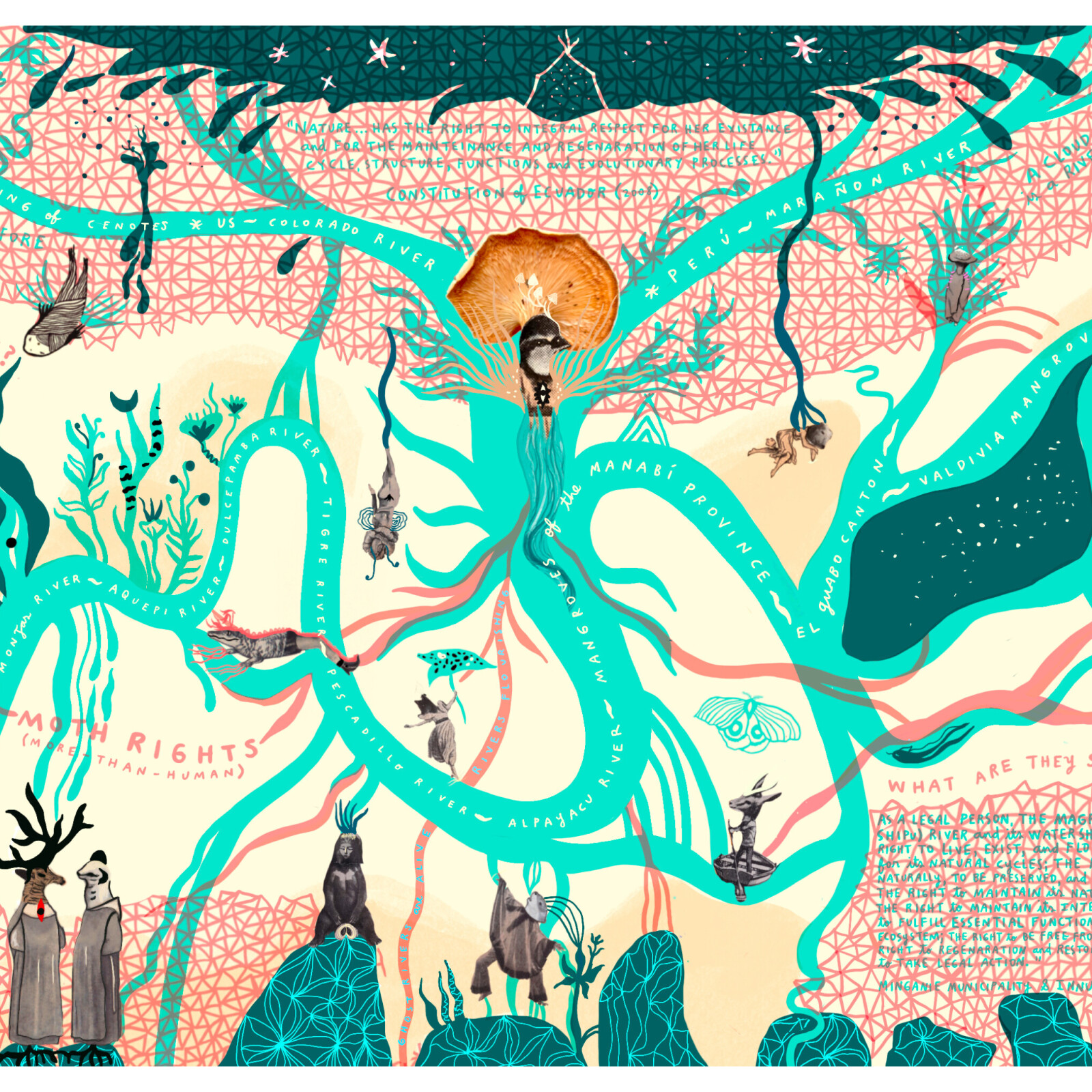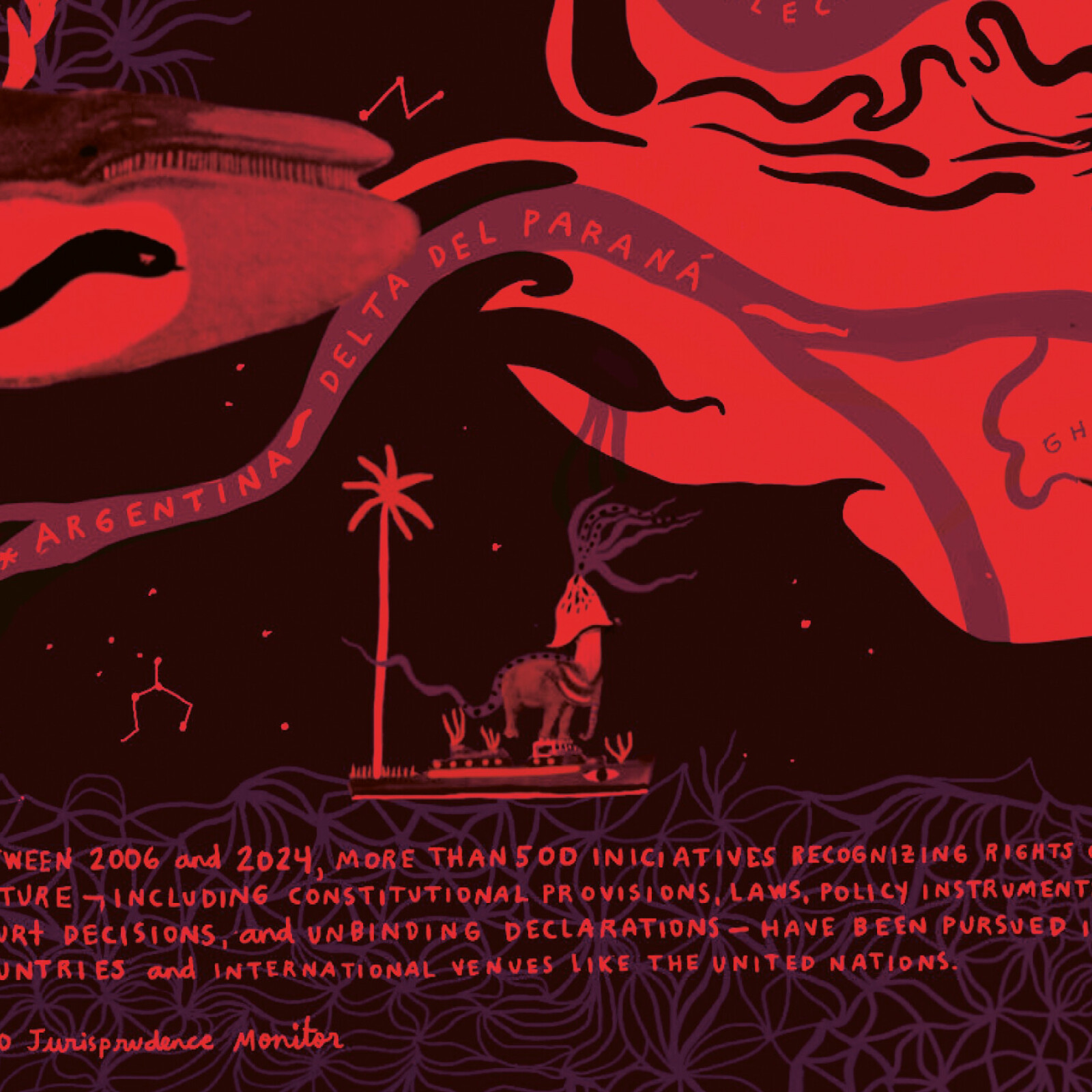A few years ago, I founded an initiative that I called More-Than-Human Life (MOTH). Co-organized with colleagues at NYU School of Law, the project brings together lawyers, scientists, Indigenous leaders, artists, writers, advocates, judges, journalists, philosophers and other thinkers and doers from around the world who work together to advance ideas and practices that support the rights and well-being of nonhumans.
In proposing the term more-than-human (MOTH) rights, I intend to call our attention to the separation between humanity and nature that is implicit in human rights language. Indeed, the term “more-than-human” was introduced by David Abram to refer to the whole of the biosphere in a way that avoids the conventional separation between humans and their “environment,” between humanity and nature. The human world is not separate but rather embedded in the more-than-human world. By extending this notion to the realm of law, I suggest that the rights of nature are neither separate from nor derivative of human rights. To the contrary: if humans are nested in the more-than-human world, then the rights of human beings are intrinsically entangled with the rights of nonhumans and embedded within the rights of nature.
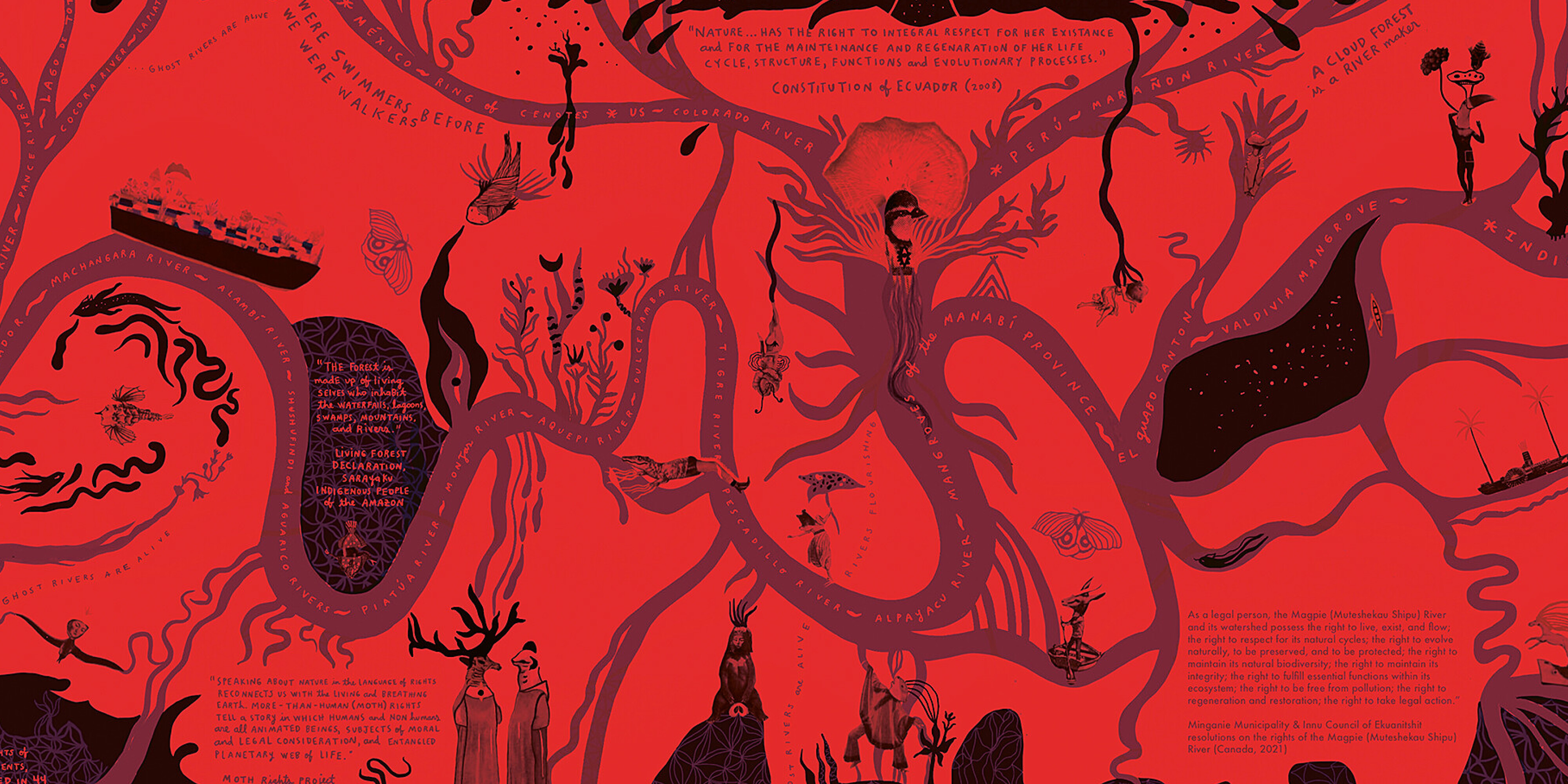
What follows are a series of quotes that feature in the More-Than-Human Rights Mural, created in collaboration with artist Elena Landinez. It is the outcome of the More than Human Fellowship, supported by Future Observatory, and is on display as part of the exhibition More than Human (11 July - 5 October 2025). These quotes draw on literature, law, national constitutions and biology as evidence of the ways in which communities around the world are according rights and protections to rivers, watersheds and the ecologies that rely on them.
These quotes are hidden within the mural; visitors can appreciate it for its beauty and detail, or pick up a mask and reveal more information, doing their own research in real time within the exhibition.
Robert Macfarlane
“Daylighting is the practice of un-burying the watercourses over which many cities have been built. Flowing invisibly down in darkness. These imprisoned watercourses are sometimes known as ‘ghost rivers’.”¹
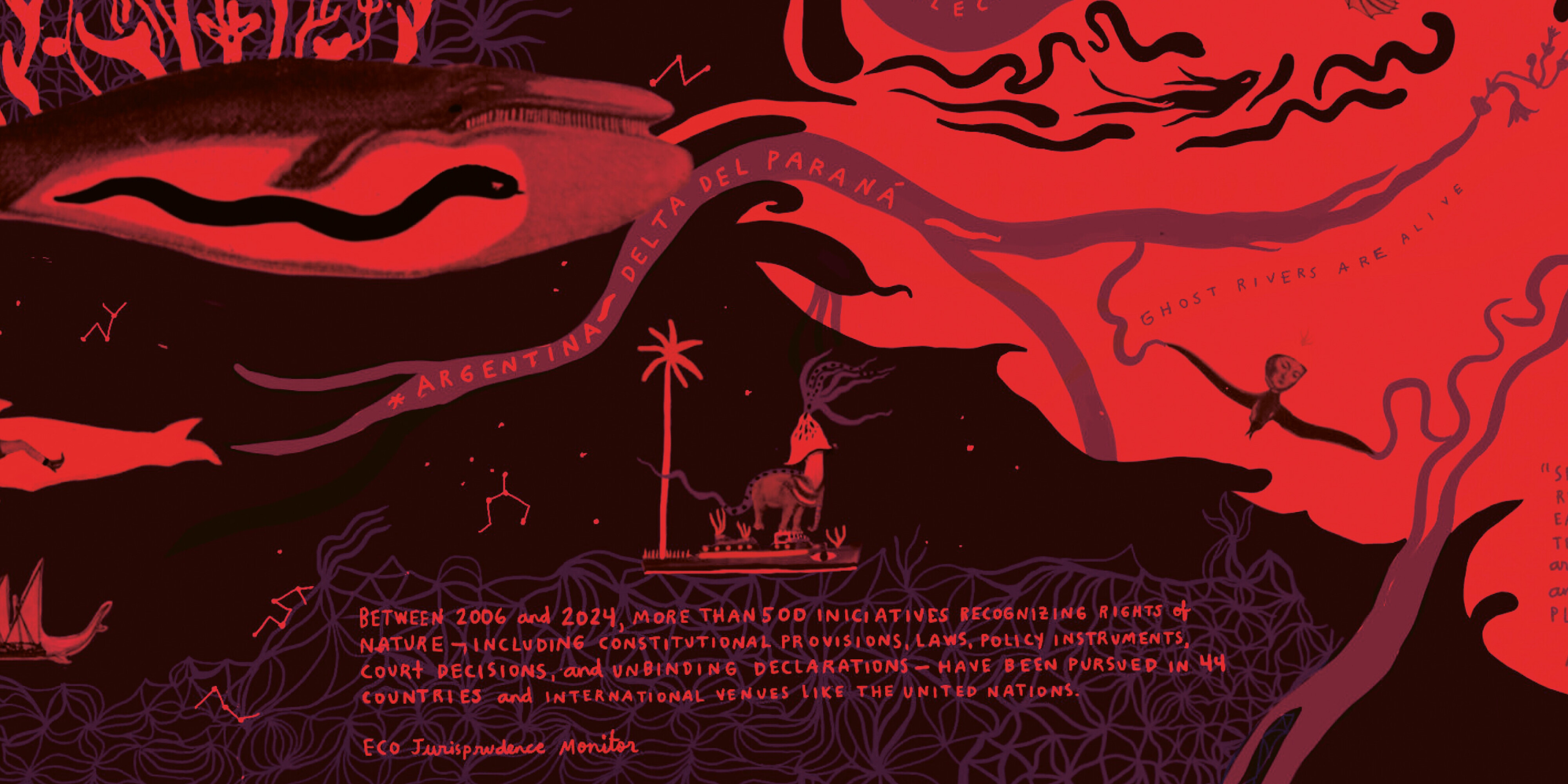
Eco Jurisprudence Monitor
“Between 2006 and 2024, more than 500 initiatives recognizing rights of nature – including constitutional provisions, laws, policy instruments, court decisions, and nonbinding declarations – have been pursued in 44 countries and international venues like the United Nations.”²
Merlin Sheldrake and D. Abrams
“Bringing more-than-humans into law is like trying to rewild a metropolis, to remember that humans have only ever been a small fraction of the city's inhabitants.”³
César Rodríguez-Garavito
“Like life itself, law evolves through continuous experimentation.”⁴
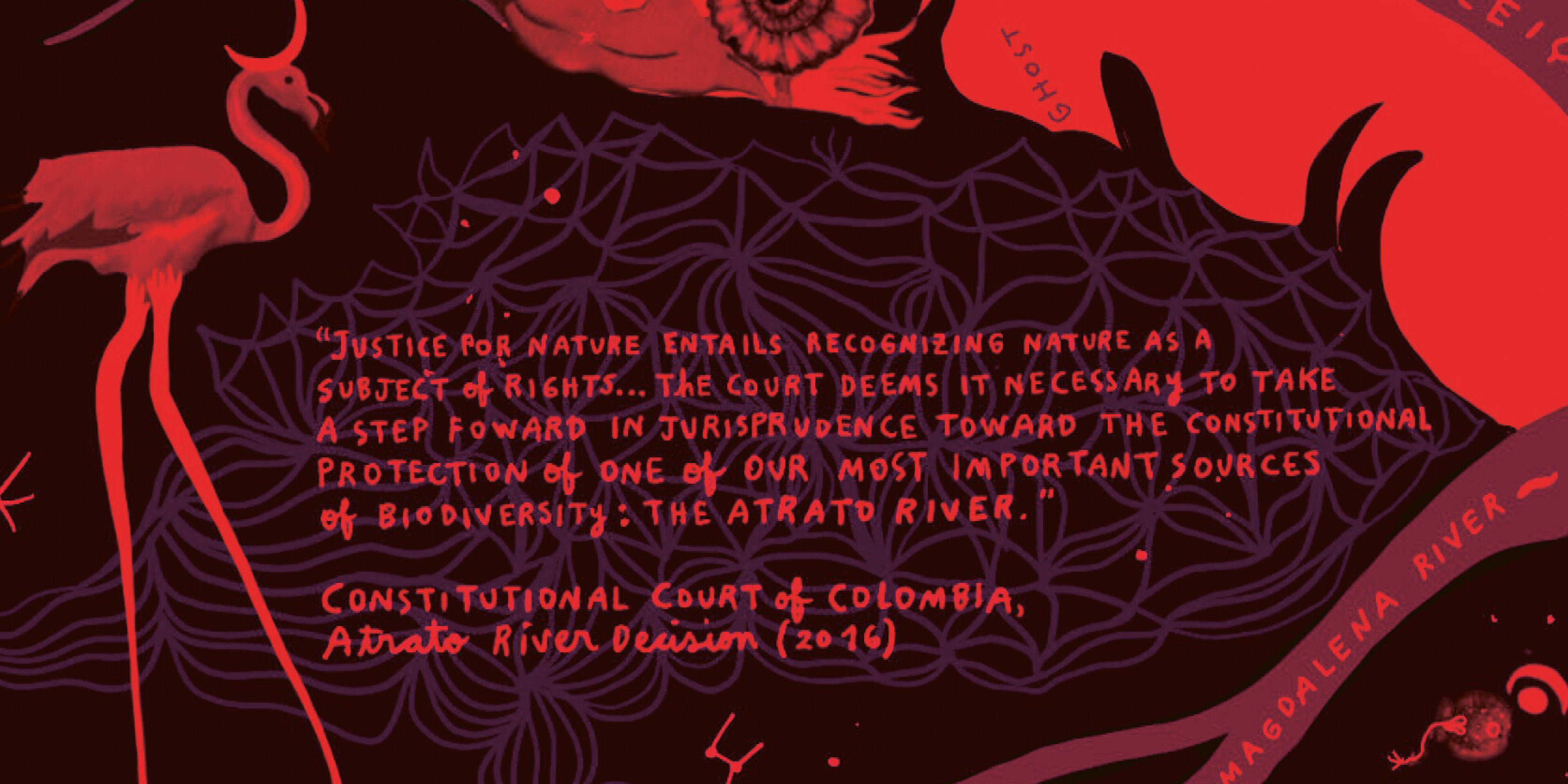
Constitutional Court of Colombia
“Justice for nature entails recognizing nature as a subject of rights…The Court deems it necessary to take a step forward in jurisprudence toward the constitutional protection of one of our most important sources of biodiversity: the Atrato River.”⁵
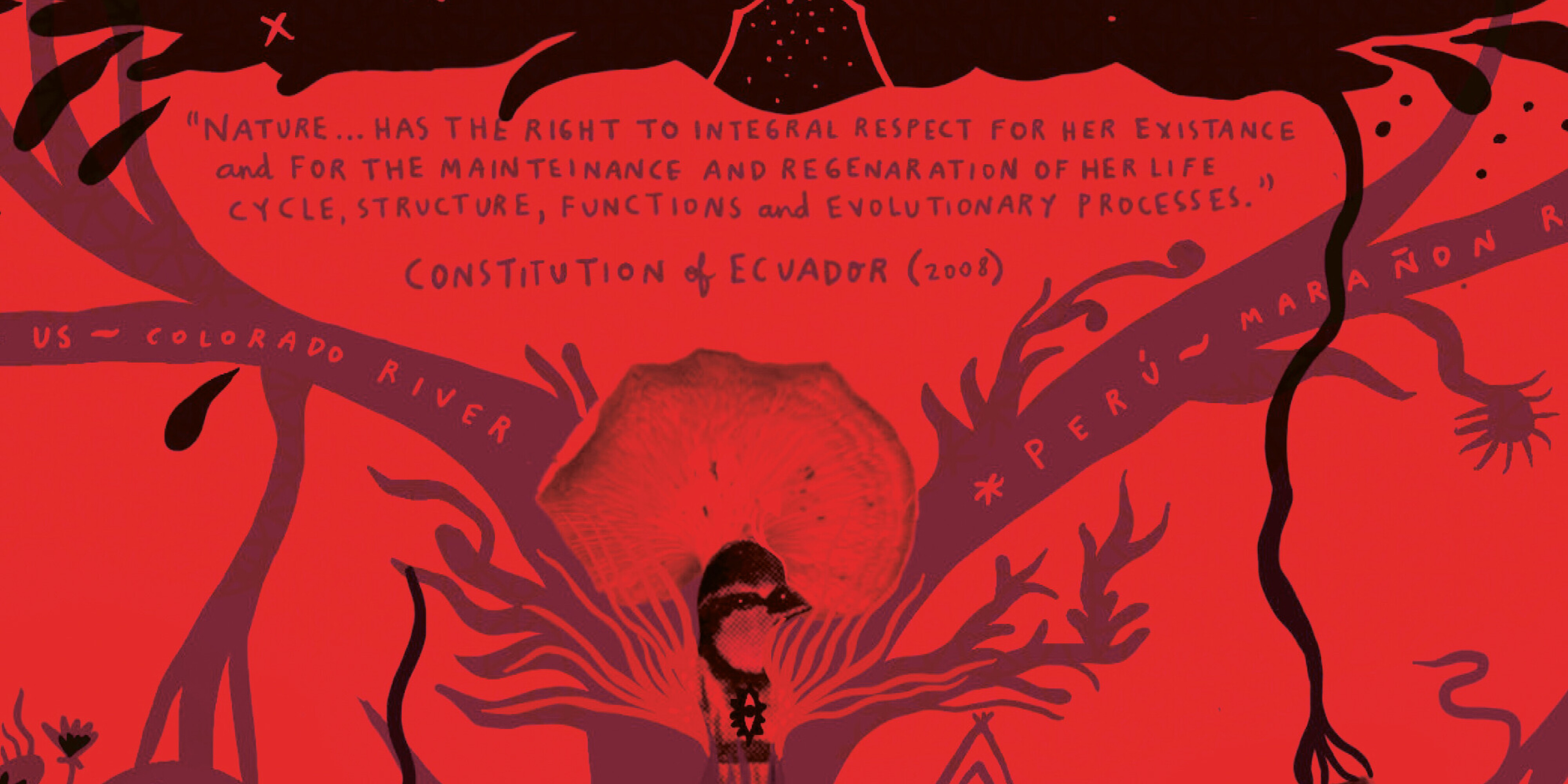
Constitution of Ecuador
“Nature… has the right to integral respect for her existence and for the maintenance and regeneration of her life cycles, structure, functions and evolutionary processes.”⁶
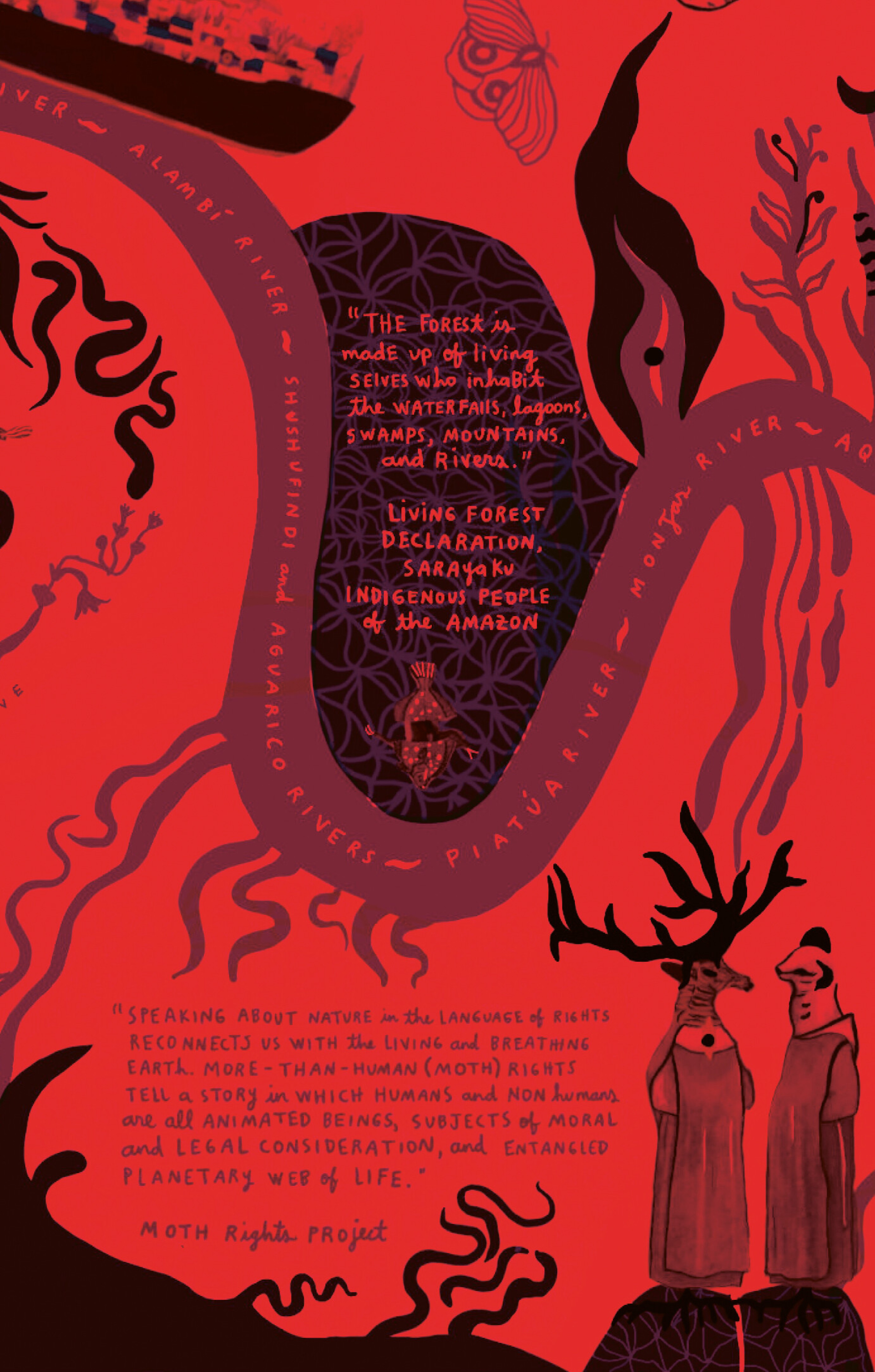
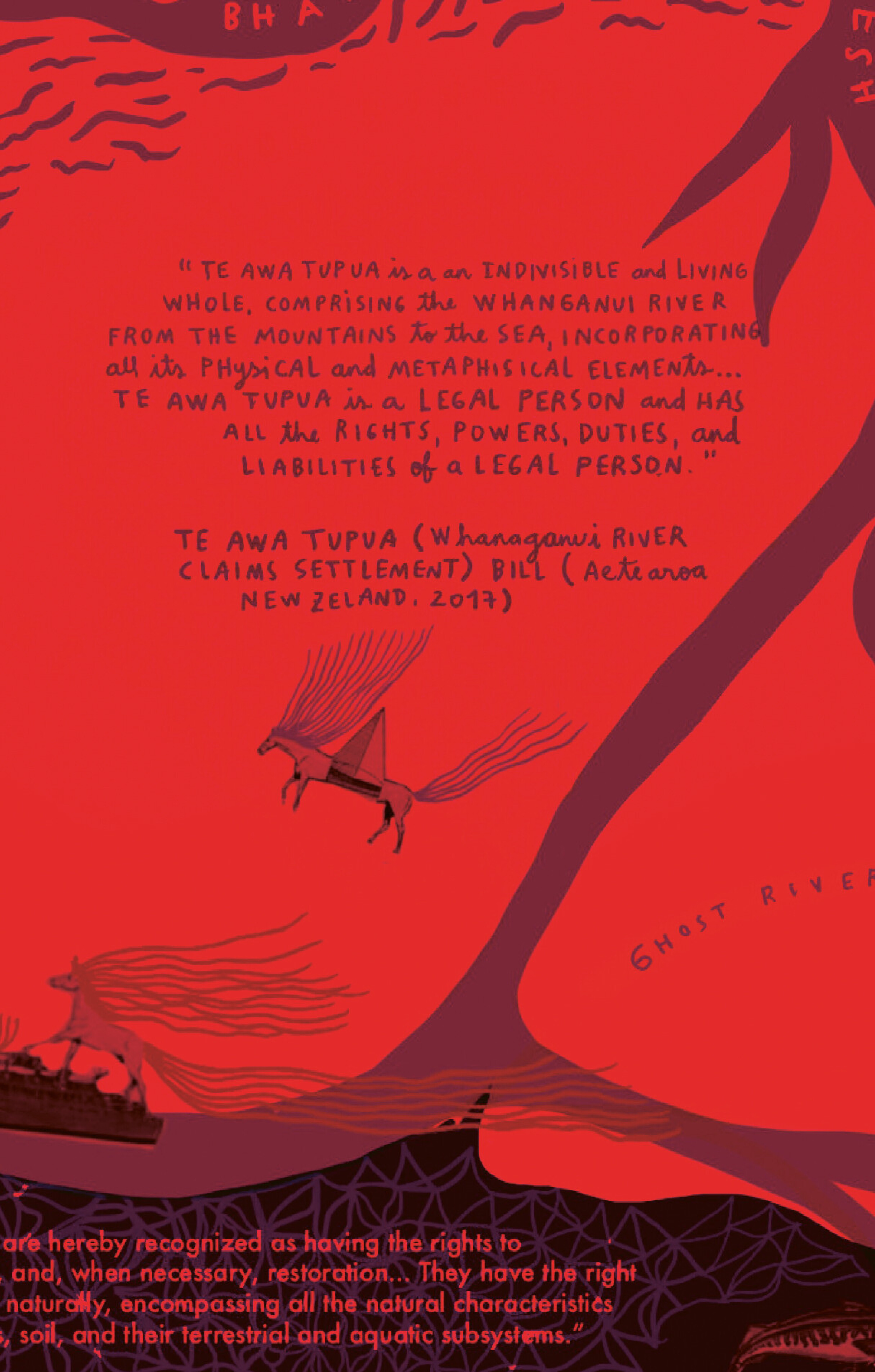
César Rodríguez-Garavito
“Speaking about nature in the language of rights reconnects us with the living and breathing Earth. More-than-human (MOTH) rights tell a story in which humans and nonhumans are all animate beings, subjects of moral and legal consideration, and entangled in the planetary web of life.”⁴
César Rodríguez-Garavito
“The problem with the traditional human rights story is that we anointed ourselves as the sole citizens of the Earth and proclaimed all other beings as aliens with no rights.”⁴
Sarayaku Indigenous People of the Amazon
“The forest is made up of living selves who inhabit the waterfalls, lagoons, swamps, mountains, and rivers.”⁷
Minganie Municipality & Innu Council of Ekuanitshit
“As a legal person, the Magpie (Muteshekau Shipu) River and its watershed possess the right to live, exist, and flow; the right to respect for its natural cycles; the right to evolve naturally, to be preserved, and to be protected; the right to maintain its natural biodiversity; the right to maintain its integrity; the right to fulfill essential functions within its ecosystem; the right to be free from pollution; the right to regeneration and restoration; the right to take legal action.”⁸
Robert Macfarlane
“Our fate flows with that of rivers, and always has.”¹
Spanish Congress
“The Mar Menor lagoon and her basin are hereby recognized as having the rights to protection, conservation, maintenance, and, when necessary, restoration... They have the right to exist as an ecosystem and to evolve naturally, encompassing all the natural characteristics of its waters, communities of organisms, soil, and their terrestrial and aquatic subsystems.”⁹
Te Awa Tupua Bill
“Te Awa Tupua is an indivisible and living whole, comprising the Whanganui River from the mountains to the sea, incorporating all its physical and metaphysical elements …. Te Awa Tupua is a legal person and has all the rights, powers, duties, and liabilities of a legal person.”¹⁰
Robert Macfarlane
“The rights of nature movement has inspired new forms of future dreaming by appealing to imagination as much as to law.”¹
Merlin Sheldrake
“The story of life is a story of wild intimacies and relationships. These relationships are the process we call life. Being is always being with.”¹¹
Robert MacFarlane
“We were swimmers before we were walkers.”¹
Robert Macfarlane
“Who are your rivers?”¹²
For more information, visit mothlife.org
Bibliography
Robert Macfarlane, Is a River Alive? (Hamish Hamilton, 2025)
Eco Jurisprudence Monitor
Merlin Sheldrake and D. Abrams, “Honoring the Anarchic Proliferation of Earthly Perspectives,” in More Than Human Rights: An Ecology of Law, Thought and Narrative for Earthly Flourishing, ed. César Rodríguez-Garavito (New York university MOTH Project, 2024
César Rodríguez-Garavito "More-Than-Human Rights: Law, Science, and Storytelling Beyond Anthropocentrism," in More Than Human Rights: An Ecology of Law, Thought and Narrative for Earthly Flourishing, ed. César Rodríguez-Garavito (New York university MOTH Project, 2024)
Constitutional Court of Colombia, Atrato River Decision (2016)
Constitution of Ecuador (2008)
Sarayaku Indigenous People of the Amazon, Living Forest Declaration
Minganie Municipality & Innu Council of Ekuanitshit resolutions on the rights of the Magpie (Muteshekau Shipu) River (Canada, 2021)
Spanish Congress, Law 19/2022
Te Awa Tupua (Whanganui River Claims Settlement) Bill (Aotearoa / New Zealand, 2017)
Merlin Sheldrake, Entangled Life: How Fungi Make Our Worlds, Change Our Minds & Shape Our Futures (Random House: 2020)
Inspired by the following passage by Robert Macfarlane Is a River Alive?, Hamish Hamilton, 2025 (Passage: "In Māori, one greets someone new by asking ‘Ko wai koe?’ –– ‘Who are you?’, a question which literally translates as ‘Who are your waters?’")


